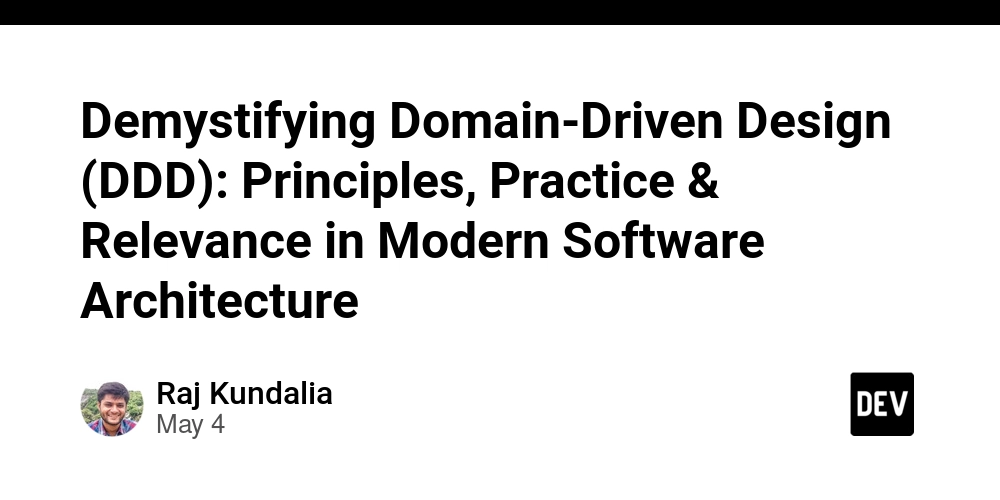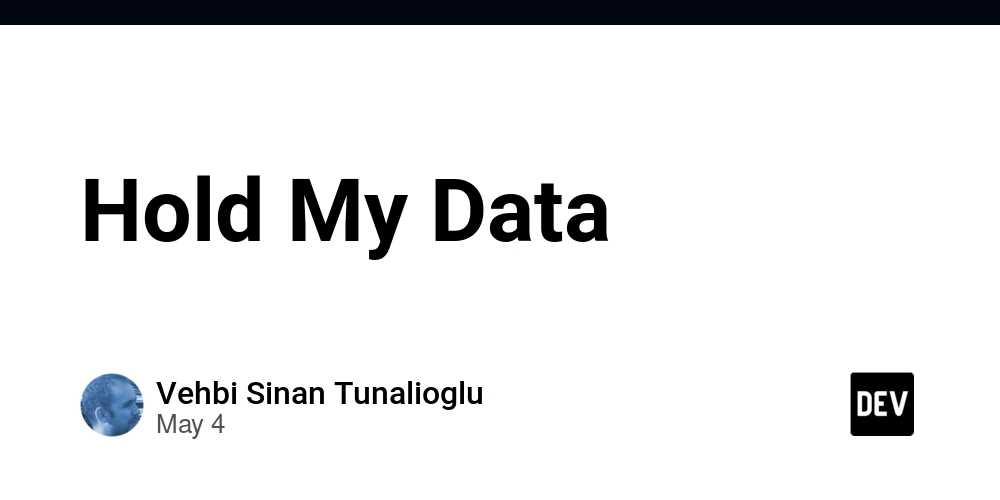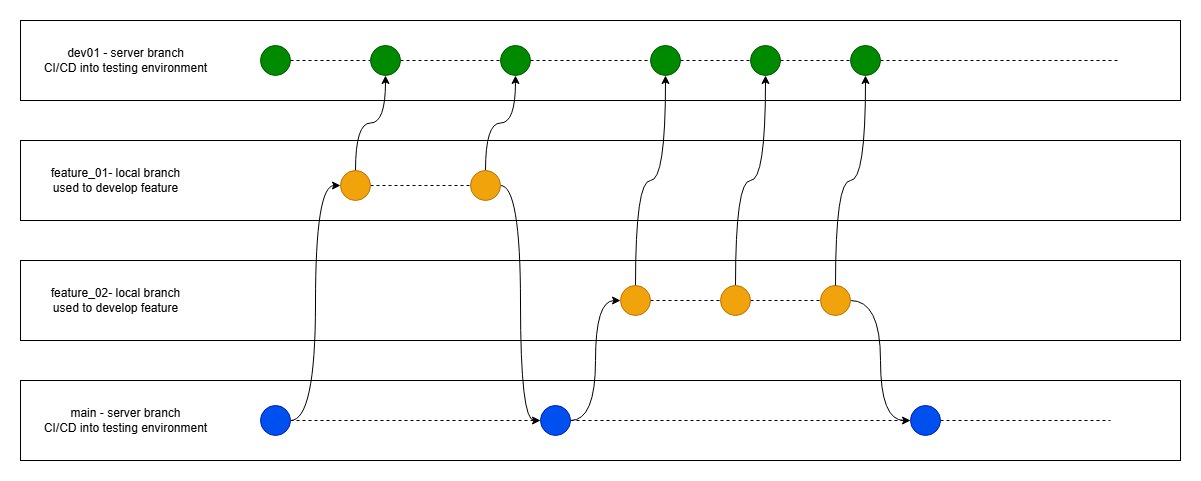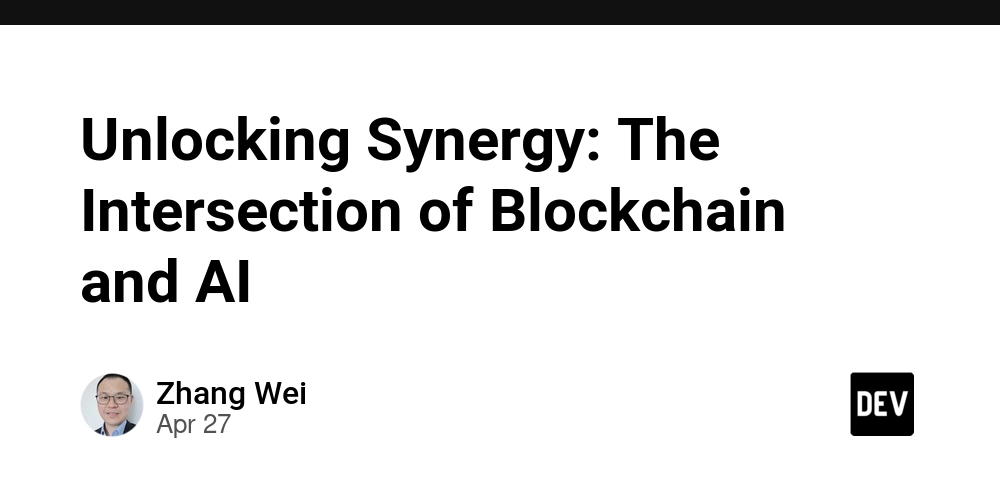Demystifying Domain-Driven Design (DDD): Principles, Practice & Relevance in Modern Software Architecture
Let's start with a joke: // Detect dark theme var iframe = document.getElementById('tweet-1918343960885399675-147'); if (document.body.className.includes('dark-theme')) { iframe.src = "https://platform.twitter.com/embed/Tweet.html?id=1918343960885399675&theme=dark" } In the ever-evolving landscape of software development, few methodologies have generated as much discussion and reverence as Domain-Driven Design (DDD). But beyond the buzz, what exactly is DDD, and does it still matter in today's fast-paced development world of microservices, distributed systems, and Agile methodologies? What is Domain-Driven Design? Domain-Driven Design, first formalized by Eric Evans in his 2003 book "Domain-Driven Design: Tackling Complexity in the Heart of Software," is an approach to software development that centers around the business domain. Rather than organizing software primarily around technical concerns or database structures, DDD focuses on modeling software that mirrors the underlying business domain and its complexities. At its core, DDD is about: Putting the domain at the center of design: Understanding and modeling the business domain with its rules, processes, and constraints as the primary focus of software development. Creating a shared language: Developing a "ubiquitous language" that both technical and business stakeholders use consistently. Isolating complexity: Organizing complex systems into manageable, bounded contexts with clear boundaries. DDD is typically divided into two complementary areas: Strategic Design: Focuses on the large-scale structure of the system, defining boundaries and relationships between different parts of the domain. Strategic design techniques help manage the complexity of large systems by dividing them into coherent pieces. Tactical Design: Provides specific implementation patterns for building domain models within a bounded context. These patterns help express domain concepts and relationships in code. Core Building Blocks of DDD Let's break down the essential concepts that make up Domain-Driven Design. Strategic Design Patterns Strategic Design Patterns in DDD focus on the large-scale structure of the system and how different parts of the domain relate to each other. These patterns help organize complex systems into manageable pieces: Bounded Contexts Bounded Contexts are explicit boundaries within which a particular domain model applies. They separate the application into distinct conceptual areas. Example: In a large retail system, there might be separate bounded contexts for: Ordering: Focusing on order creation, processing, and fulfillment Inventory: Managing stock levels and warehouse locations Customer Relations: Handling customer data and support interactions Each bounded context has its own model, potentially with different definitions for seemingly similar concepts. For instance, a "Product" in the Ordering context might include pricing and customer-visible attributes, while in the Inventory context, it might focus on stock keeping units and storage requirements. Context Maps Context maps define relationships between bounded contexts, showing how they interact and translate concepts between their domain models. Relationship Types: Partnership: Teams collaborate closely to align their models Customer-Supplier: Upstream and downstream relationship with mutual dependencies Conformist: Downstream context adopts upstream context's model Anti-Corruption Layer: Translator protects one context from another's model Shared Kernel: Explicitly shared subset of the domain model Open Host Service: Protocol for integration with other contexts Ubiquitous Language A shared vocabulary used by all team members (both technical and business) when discussing the domain. Each bounded context has its own ubiquitous language that precisely fits its particular subdomain. Example: In an investment banking application, terms like "Position," "Trade," and "Settlement" would have precise definitions understood by both developers and domain experts, and these definitions might differ between the Trading and Accounting bounded contexts. Core Domain The Core Domain represents the primary area of strategic value for the business. It's the part of the system that provides competitive advantage and should receive the most attention and investment. Example: For an online bookstore, the recommendation engine might be the core domain that differentiates it from competitors, while payment processing might be a supporting domain. One more example is: Curated Content and Editorial Features: Providing expert reviews, author interviews, themed reading lists, and community forums to foster engagement and guide discovery. Subdomains Subdomains are logical areas of the business domain, which may be implemented as one or more bounded contexts: Core Subdomain

Let's start with a joke:
// Detect dark theme
var iframe = document.getElementById('tweet-1918343960885399675-147');
if (document.body.className.includes('dark-theme')) {
iframe.src = "https://platform.twitter.com/embed/Tweet.html?id=1918343960885399675&theme=dark"
}
In the ever-evolving landscape of software development, few methodologies have generated as much discussion and reverence as Domain-Driven Design (DDD). But beyond the buzz, what exactly is DDD, and does it still matter in today's fast-paced development world of microservices, distributed systems, and Agile methodologies?
What is Domain-Driven Design?
Domain-Driven Design, first formalized by Eric Evans in his 2003 book "Domain-Driven Design: Tackling Complexity in the Heart of Software," is an approach to software development that centers around the business domain. Rather than organizing software primarily around technical concerns or database structures, DDD focuses on modeling software that mirrors the underlying business domain and its complexities.
At its core, DDD is about:
- Putting the domain at the center of design: Understanding and modeling the business domain with its rules, processes, and constraints as the primary focus of software development.
- Creating a shared language: Developing a "ubiquitous language" that both technical and business stakeholders use consistently.
- Isolating complexity: Organizing complex systems into manageable, bounded contexts with clear boundaries.
DDD is typically divided into two complementary areas:
- Strategic Design: Focuses on the large-scale structure of the system, defining boundaries and relationships between different parts of the domain. Strategic design techniques help manage the complexity of large systems by dividing them into coherent pieces.
- Tactical Design: Provides specific implementation patterns for building domain models within a bounded context. These patterns help express domain concepts and relationships in code.
Core Building Blocks of DDD
Let's break down the essential concepts that make up Domain-Driven Design.
Strategic Design Patterns
Strategic Design Patterns in DDD focus on the large-scale structure of the system and how different parts of the domain relate to each other. These patterns help organize complex systems into manageable pieces:
Bounded Contexts
Bounded Contexts are explicit boundaries within which a particular domain model applies. They separate the application into distinct conceptual areas.
Example:
In a large retail system, there might be separate bounded contexts for:
- Ordering: Focusing on order creation, processing, and fulfillment
- Inventory: Managing stock levels and warehouse locations
- Customer Relations: Handling customer data and support interactions
Each bounded context has its own model, potentially with different definitions for seemingly similar concepts. For instance, a "Product" in the Ordering context might include pricing and customer-visible attributes, while in the Inventory context, it might focus on stock keeping units and storage requirements.
Context Maps
Context maps define relationships between bounded contexts, showing how they interact and translate concepts between their domain models.
Relationship Types:
- Partnership: Teams collaborate closely to align their models
- Customer-Supplier: Upstream and downstream relationship with mutual dependencies
- Conformist: Downstream context adopts upstream context's model
- Anti-Corruption Layer: Translator protects one context from another's model
- Shared Kernel: Explicitly shared subset of the domain model
- Open Host Service: Protocol for integration with other contexts
Ubiquitous Language
A shared vocabulary used by all team members (both technical and business) when discussing the domain. Each bounded context has its own ubiquitous language that precisely fits its particular subdomain.
Example:
In an investment banking application, terms like "Position," "Trade," and "Settlement" would have precise definitions understood by both developers and domain experts, and these definitions might differ between the Trading and Accounting bounded contexts.
Core Domain
The Core Domain represents the primary area of strategic value for the business. It's the part of the system that provides competitive advantage and should receive the most attention and investment.
Example:
For an online bookstore, the recommendation engine might be the core domain that differentiates it from competitors, while payment processing might be a supporting domain.
One more example is: Curated Content and Editorial Features: Providing expert reviews, author interviews, themed reading lists, and community forums to foster engagement and guide discovery.
Subdomains
Subdomains are logical areas of the business domain, which may be implemented as one or more bounded contexts:
- Core Subdomains: Areas critical to business success, requiring deep domain modeling. E.g. the algorithms powering our personalized book suggestions are a critical focus.
- Supporting Subdomains: Important areas that support core business functions but aren't differentiators. E.g. efficiently managing the shopping cart process is essential for a smooth purchase experience.
- Generic Subdomains: Common business functions that could be outsourced or implemented using off-the-shelf solutions. E.g. handling basic user login and authentication is a standard requirement for access.
Tactical Design Patterns
Tactical Design Patterns in DDD provide specific building blocks for expressing domain concepts in code. These patterns help implement rich, behavior-driven domain models within a bounded context:
Entities
Entities are objects defined primarily by their identity, not by their attributes. They have a lifecycle and can change over time while maintaining the same identity.
Example:
In an e-commerce system, a Customer is an entity. Even if a customer changes their name, address, and other attributes, they remain the same customer. Their identity persists despite changes to their attributes.
public class Customer {
private final CustomerId id; // Identity
private String name;
private Address address;
// Constructor, getters, behavior methods...
}
Value Objects
Value objects are defined by their attributes rather than identity. They are immutable, comparable by their values, and don't have lifecycle concerns.
Example:
In the same e-commerce system, an Address is a value object. It represents a concept with multiple attributes but no distinct identity beyond those attributes.
public final class Address {
private final String street;
private final String city;
private final String zipCode;
public Address(String street, String city, String zipCode) {
this.street = street;
this.city = city;
this.zipCode = zipCode;
}
// No setters, only getters - immutable
// equals() and hashCode() based on all fields
}
Aggregates
Aggregates group related entities and value objects into a cluster with a single entity as its root. The aggregate root controls access to all objects within the aggregate, enforces invariants, and is the only object that external code is allowed to reference directly.
- Aggregate Root: The aggregate root is responsible for maintaining the consistency of the entire aggregate and ensuring that all invariants are satisfied. It serves as the entry point to the aggregate, controlling all modifications to objects within its boundary. Any change to objects inside an aggregate must go through the root.
Example:
In an e-commerce system, an Order aggregate includes the Order entity (the root), OrderLine entities, and possibly value objects like Money for pricing. Outside components cannot directly modify or access the OrderLine entities; they must go through the Order aggregate root.
public class Order { // Aggregate root
private final OrderId id;
private CustomerId customerId;
private List orderLines = new ArrayList<>();
private OrderStatus status;
public void addProduct(Product product, int quantity) {
// Enforces business rules about adding products
// Controls access to OrderLine entities
}
public void confirm() {
// Business logic for confirming an order
}
// Other methods that enforce business rules...
}
Repositories
Repositories provide an abstraction for storing and retrieving aggregates, hiding the details of database access.
Example:
An OrderRepository provides methods to find, save, and retrieve Order aggregates.
public interface OrderRepository {
Order findById(OrderId id);
void save(Order order);
List findByCustomerId(CustomerId customerId);
}
Domain Services
Domain services encapsulate domain logic that doesn't naturally fit within entities or value objects, often involving multiple domain objects. They should express domain capabilities in business language rather than technical functions.
Example:
A PriceCalculator (named to reflect the domain capability rather than a technical "service") might determine the final price of an order based on products, quantities, customer discounts, and current promotions.
public class PriceCalculator {
public Money calculateOrderTotal(Order order, Customer customer) {
// Complex pricing logic involving multiple domain objects
}
}
Domain Events
Domain events represent significant occurrences within the domain that domain experts care about. They capture actions that have happened in the past and can trigger further processing within the system.
Example:
An OrderPlaced event might be generated when a customer completes an order, triggering inventory updates, payment processing, and shipping arrangements.
public class OrderPlaced implements DomainEvent {
private final OrderId orderId;
private final CustomerId customerId;
private final LocalDateTime occurredOn;
// Constructor, getters...
}
Factories
Factories encapsulate complex object creation logic, especially when creating aggregates requires enforcing invariants or coordinating the creation of multiple objects.
Example:
An OrderFactory might handle the creation of Order aggregates, ensuring all necessary components are properly initialized.
public class OrderFactory {
public Order createOrder(CustomerId customerId, List items) {
Order order = new Order(OrderId.generate(), customerId);
for (OrderLineItem item : items) {
order.addLineItem(item);
}
return order;
}
}
Modules
Modules provide a way to organize code within a bounded context, grouping related components together. They should reflect domain concepts rather than technical layers.
Example:
In an e-commerce system, you might have modules like Ordering, Catalog, and Fulfillment within a single bounded context, each containing the relevant entities, value objects, and services for that aspect of the domain.
// Package structure reflecting modules
com.example.ecommerce.ordering
com.example.ecommerce.catalog
com.example.ecommerce.fulfillment
DDD vs. Traditional Design Paradigms
DDD vs. Object-Oriented Programming (OOP)
While DDD utilizes OOP principles, there are key differences:
OOP focuses on object relationships and behavior, with design often driven by technical concerns.
Example: Creating a Customer class primarily to hold data and basic behaviors without deep domain insights.DDD emphasizes modeling the business domain, with design driven by business requirements and language.
Example: Modeling a Customer entity with rich behavior that reflects real business processes like upgrading membership tiers.OOP objects may mix business and technical concerns, lacking clear boundaries between functional areas.
Example: A Product class handling both domain logic and database persistence.DDD strictly separates domain logic from infrastructure and explicitly defines bounded contexts.
Example: A Product entity containing only business rules, with persistence handled by a repository implementation.
DDD vs. Database-First Design
Database-First models software around database tables and entities often mirror these tables directly.
Example: A Customer object with fields matching exactly to the customers table.DDD models software around business concepts, with entities reflecting business concepts regardless of storage.
Example: A Customer aggregate containing Address value objects and PurchaseHistory, organized by business meaning.Database-First changes to the data model often require changes across all layers of the application.
Example: Adding a column requires updating every layer from database to UI.DDD allows the domain model to evolve independently of persistence concerns.
Example: Adding a new business rule to an entity without changing database schemas.
DDD vs. Layered Architecture
Layered architecture (Presentation, Application, Domain, Infrastructure) isn't incompatible with DDD but differs in emphasis:
- Traditional Layered Architecture - the domain layer often just holds data, while the actual business rules are handled in separate service areas. For instance, simple data containers exist, and service classes do most of the work.
DDD emphasizes business domain modeling with rich domain models encapsulating business logic.
Example: Entities and aggregates that contain methods enforcing complex business rules.Traditional Layered Architecture defines layers by technical role, potentially creating tight coupling between layers.
Example: Domain objects designed around data access patterns.DDD defines bounded contexts by business concepts and uses dependency inversion to keep the domain model independent.
Example: Domain interfaces that infrastructure adapters must implement.
Real-World Transformation Example
Consider a financial system that manages investment portfolios:
Without DDD:
The system might be organized around database tables (Users, Accounts, Transactions, Securities) with business logic spread across service classes, controllers, and even UI components. Changes to business rules require updates in multiple locations, and the code doesn't clearly express the investment domain.With DDD:
The system is organized into bounded contexts: Portfolio Management, Trading, Reporting, User Management.
Within the Portfolio Management context:
- Aggregate roots include Portfolio and InvestmentStrategy
- Entities include AssetAllocation and InvestmentHolding
- Value objects include Money, AllocationPercentage, and RiskScore
- Domain services include PortfolioRebalancer and RiskAnalyzer
The resulting system more clearly expresses investment concepts and business rules. When regulatory requirements change, modifications are concentrated in the appropriate bounded context rather than scattered throughout the codebase.
DDD in the Modern Era
DDD and Microservices
DDD and microservices are highly complementary. Bounded contexts provide a natural boundary for microservices, enabling teams to build, deploy, and scale services independently.
Each microservice can have its own domain model tailored to its specific business capability, avoiding the compromise of a one-size-fits-all model. The context mapping techniques from DDD help manage the relationships between these independent services.
Example:
An e-commerce platform might have microservices for:
- Product Catalog (with product-focused domain model)
- Order Processing (with order and fulfillment models)
- Customer Management (with customer-focused models)
- Payment Processing (with payment and transaction models)
Each service owns its data and exposes capabilities through well-defined interfaces, much like DDD's bounded contexts.
DDD and Agile Development
Agile's emphasis on collaboration between business stakeholders and developers aligns with DDD's ubiquitous language concept. However, this relationship comes with nuances:
- DDD's modeling depth can enhance Agile teams' understanding of complex domains
- Not all Agile projects benefit from full DDD; it's most valuable in complex, evolving business domains where deep modeling and clear boundaries are essential
Conclusion
Domain-Driven Design remains a powerful methodology for tackling complexity in modern software systems. By focusing on the business domain, creating a shared language, and organizing code around meaningful boundaries, DDD helps teams build software that is both robust and adaptable to change.






































































































































































![[The AI Show Episode 145]: OpenAI Releases o3 and o4-mini, AI Is Causing “Quiet Layoffs,” Executive Order on Youth AI Education & GPT-4o’s Controversial Update](https://www.marketingaiinstitute.com/hubfs/ep%20145%20cover.png)



























































































































![[DEALS] Microsoft 365: 1-Year Subscription (Family/Up to 6 Users) (23% off) & Other Deals Up To 98% Off – Offers End Soon!](https://www.javacodegeeks.com/wp-content/uploads/2012/12/jcg-logo.jpg)




![From Art School Drop-out to Microsoft Engineer with Shashi Lo [Podcast #170]](https://cdn.hashnode.com/res/hashnode/image/upload/v1746203291209/439bf16b-c820-4fe8-b69e-94d80533b2df.png?#)








































































































(1).jpg?#)
































_Inge_Johnsson-Alamy.jpg?width=1280&auto=webp&quality=80&disable=upscale#)














































































































![Apple to Split iPhone Launches Across Fall and Spring in Major Shakeup [Report]](https://www.iclarified.com/images/news/97211/97211/97211-640.jpg)
![Apple to Move Camera to Top Left, Hide Face ID Under Display in iPhone 18 Pro Redesign [Report]](https://www.iclarified.com/images/news/97212/97212/97212-640.jpg)
![Apple Developing Battery Case for iPhone 17 Air Amid Battery Life Concerns [Report]](https://www.iclarified.com/images/news/97208/97208/97208-640.jpg)
![AirPods 4 On Sale for $99 [Lowest Price Ever]](https://www.iclarified.com/images/news/97206/97206/97206-640.jpg)

































![[Updated] Samsung’s 65-inch 4K Smart TV Just Crashed to $299 — That’s Cheaper Than an iPad](https://www.androidheadlines.com/wp-content/uploads/2025/05/samsung-du7200.jpg)


































































